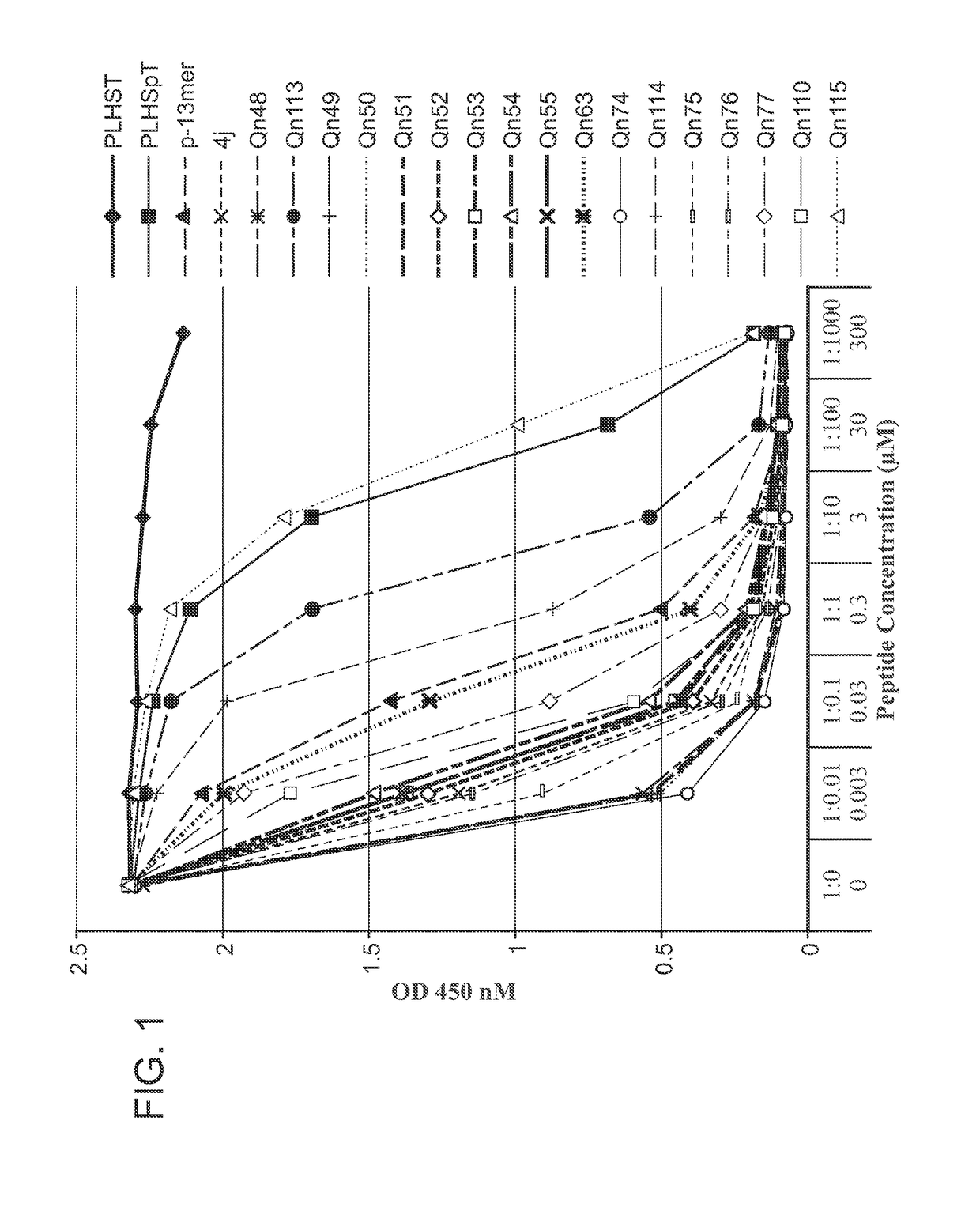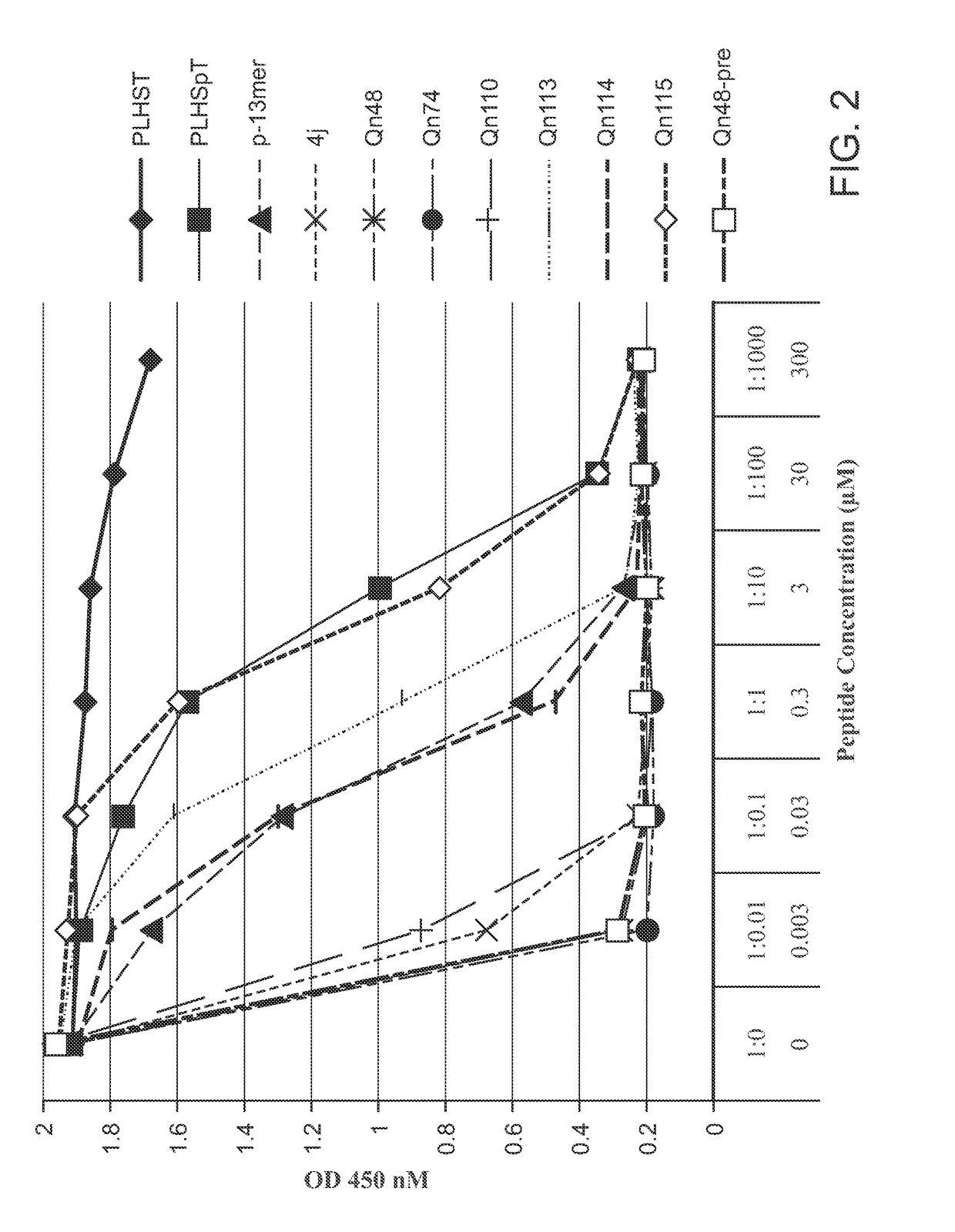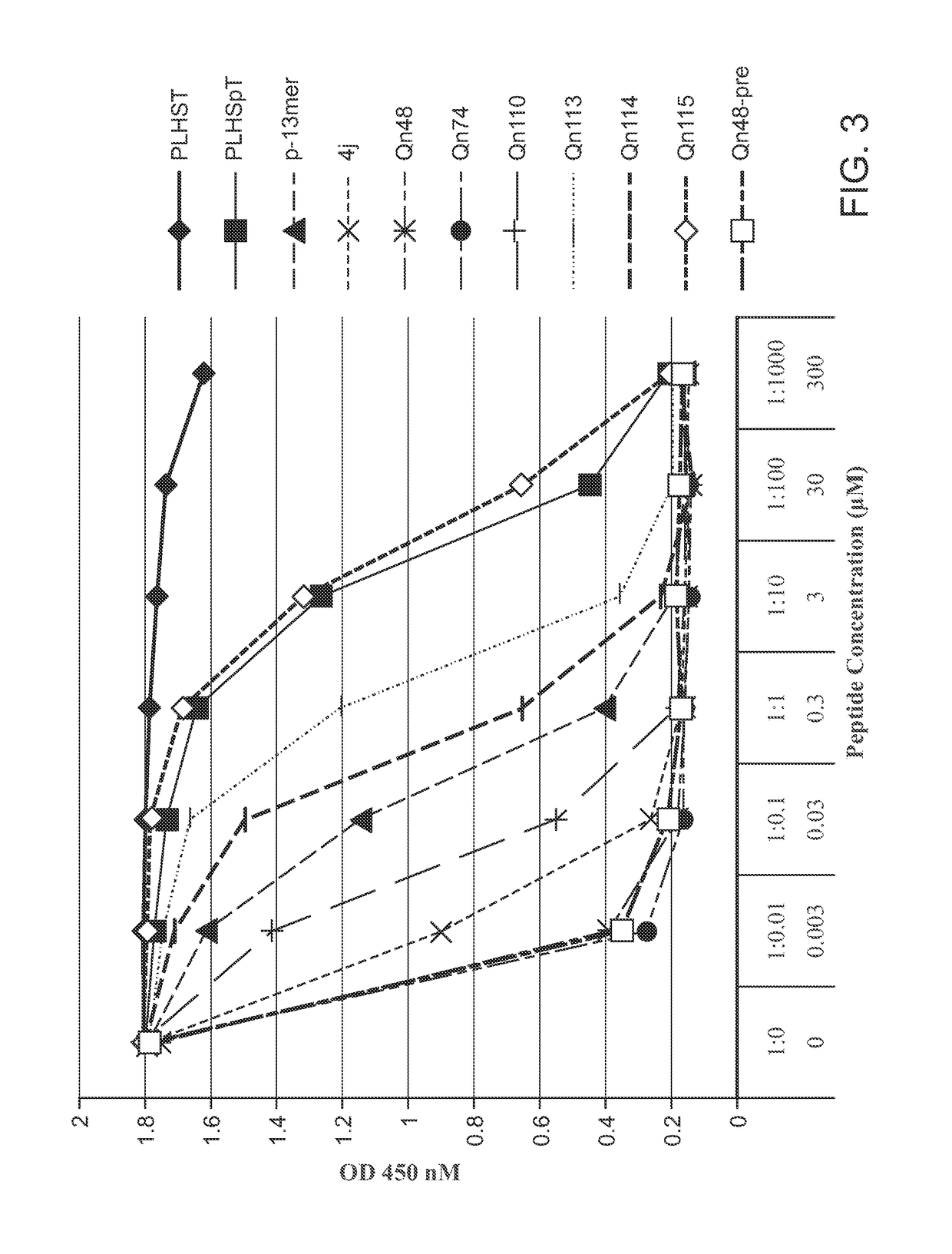Peptide and peptide mimetic binding antagonists of polo-like kinase 1 polo box domain and methods of use
a pololike kinase and mimetic binding technology, which is applied in the direction of enzyme inhibitors, peptide/protein ingredients, transferases, etc., can solve the problems of difficult for peptides to achieve activity in whole-cell systems, reduce tumor growth in mouse xenograft models, and interfere with plk1 function, etc., to achieve good cellular uptake, high pbd-binding affinity, and good cellular efficacy
- Summary
- Abstract
- Description
- Claims
- Application Information
AI Technical Summary
Benefits of technology
Problems solved by technology
Method used
Image
Examples
example 1
Enzymatic Deprotection of Peptides Containing POM-Protected pThr and Pmab Residues
[0538]Hydrolysis assays were run on five POM-protected peptides (see below):
[0539]
[0540]
TABLE 3EntryComp. No.XR1R2RaRb1A1OPOMPOMHabsent2A3CH2POMPOMHabsent3A5OPOMPOMPh(CH2)8absent4A9CH2POMPOMPh(CH2)8absent5A10OPOMHPh(CH2)8CH2CH2OH
[0541]There are three types of hydrolysis experiment performed in these peptides. The half-life of each peptide in different type of hydrolysis experiment was calculated and listed in Tables 4-6.
[0542]Type 1: 200 μM peptide with Porcine Liver Esterase (58 units, according the protocol presented in Srivastva, D. N.; Farquhar, D. Bioorg. Chem. 1984, 12, 118). The results are provided in Table 4:
[0543]
TABLE 4Half-life of peptides in PLEEntryComp. No.Half-life (min)1A16.82A35.14A51145A92.26A10240
[0544]Type 2: 1 μM peptide in culture medium and 200 μM peptide in culture medium. The results are provided in Table 5 as follows:
[0545]
TABLE 5Half-life of peptides in culture mediumEntryCo...
example 2
ELISA Binding Data for Select Peptide Derivatives
[0552]An ELISA-based PBD-binding inhibition assay was carried out on select peptide derivatives using an immobilized biotinylated 9-mer p-T78 peptide {Biotin-C—(CH2)6-(CH2)6-DPPLHSpTAI-NH 2} and the cellular lysates expressing HA-EGFP-Plk1.ELISA assays were run as previously reported (see: Nat. Struct. Mol. Biol. 2009, 16, 876-882; Nat. Chem. Biol. 2011, 7, 595-601; ACS Chem. Biol. 2012, 7, 805-810; ChemBioChem 2012, 13, 1291-1296). The test data was provided in FIGS. 1-3 and discussed infra.
[0553]
TABLE 8IC50 / μMPLHSpT9.4p-13mer0.0704j0.0030Qn480.0013Qn1130.82Qn490.0013Qn500.0013Qn510.0013Qn520.0039Qn530.0047Qn540.0061Qn550.0048Qn630.039Qn740.0012Qn1140.15Qn750.0019Qn760.0026Qn770.015Qn1100.0093Qn11517
[0554]The test data provided in FIG. 2 was generated from an assay, in which cell lysates containing full-length Plk1 were incubated with test peptides (1.5 h), and test peptides were then added and binding was allowed to occur over 1 h p...
example 3
PBD Floresence Polarization Binding Assay
[0556]The FP competitive assay shows that the pThr monoester containing peptide demonstrated good binding affinity (˜10 nM; see FIG. 4).
[0557]To test for Plk specificity of the selected peptides, the inventors prepared appropriate FITC-labeled peptides and performed direct FP binding assays. These assays showed approximately two orders of magnitude less affinity for FITC-Qn48 against Plk2 PBD and Plk3 PBD (see FIG. 5).
PUM
| Property | Measurement | Unit |
|---|---|---|
| temperature | aaaaa | aaaaa |
| concentration | aaaaa | aaaaa |
| pH | aaaaa | aaaaa |
Abstract
Description
Claims
Application Information
 Login to View More
Login to View More - R&D
- Intellectual Property
- Life Sciences
- Materials
- Tech Scout
- Unparalleled Data Quality
- Higher Quality Content
- 60% Fewer Hallucinations
Browse by: Latest US Patents, China's latest patents, Technical Efficacy Thesaurus, Application Domain, Technology Topic, Popular Technical Reports.
© 2025 PatSnap. All rights reserved.Legal|Privacy policy|Modern Slavery Act Transparency Statement|Sitemap|About US| Contact US: help@patsnap.com



